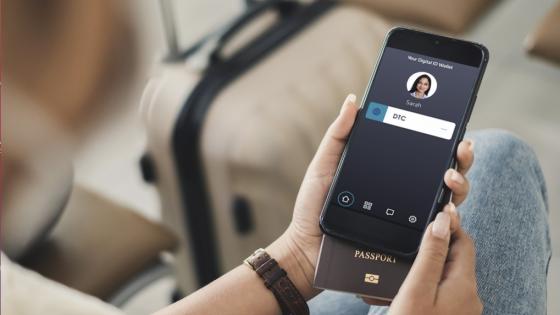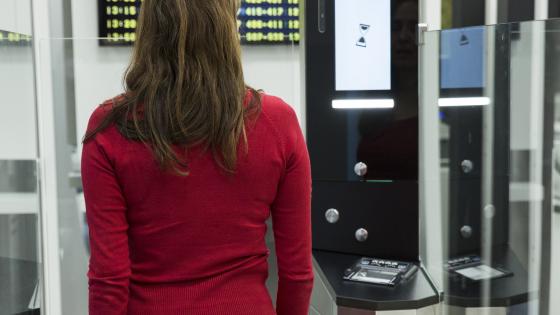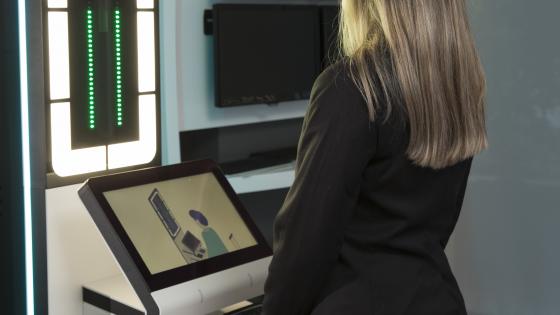Biometrics have a key role to play in getting airports back to business post-pandemic, explains Justin Walker, VP for digital transformation, Thales
Few industries have been more severely impacted by the COVID-19 pandemic than the travel sector. Finally, however, after years of lockdown and restrictions, the industry can make its long-awaited comeback. Travellers are looking forward to a seamless travel experience once again – and that startsat the airport.
Achieving this is not without challenges. The sector needs to ensure the smooth transition of millions of travellers every day, all the while remaining secure and compliant.
In this article, we’ll be looking at how biometrics are already helping ease pressure at airports, and how they could help in the future.
Widespread adoption of automated border control technology is streamlining the verification of millions of travellers every year
What is biometric security?
Biometrics is a type of security that verifies a user’s physical characteristics and behaviour to identify them. It is considered one of the most accurate and robust forms of ID verification available.
Whether or not we know it, many of us use biometric authentication on a daily basis, perhaps in the form of facial recognition on smartphones, or fingerprint recognition when we log onto an online banking app.
Biometrics can increase efficiency by removing the need for manual checks, providing both convenience and security, as there are no tokens to carry or passwords to remember. They’re difficult to duplicate and after a certain age remain consistent.
The prevalence, and acceptance, of biometrics as a form of identification is also on the rise. Aside from the smartphone example, biometrics are commonly used in a number of industries, including financial services, where they often take the form of biometric bank cards. By integrating a fingerprint scanner into the card, banks can afford consumers unparalleled security when making payments, in a convenient way, to protect their financial information from fraudsters.

Justin Walker, VP for digital transformation
Helping with border security
So, how exactly can biometrics help the airport industry? Yes, airports need to ensure a swift service for customers and create a seamless travel experience, but security and safety is still vital and cannot be compromised on. However, thanks to biometric technology, one does not have to be sacrificed for the sake of the other.
One such example of biometrics in action lies with automated border control systems. Also commonly known as eGates, automated border control systems (ABC) are automated self-service barriers which use data stored in a chip in biometric passports along with a fingerprint or photo taken at the time of entering – this verifies the passport holder’s identity. The passport needs to be authenticated, the traveller’s identity needs to be verified, and that identity needs to be checked and cleared with government and third-party systems. While this sounds like a cumbersome process, it’s actually done in a matterof seconds – enabling travellers to move through border control seamlessly and effortlessly.
On-the-move facial recognition and contactless fingerprint scanning challenge the need to even have doors

ICAO aims to convert passports into Digital Travel Credentials, meaning that digital passports and e-visas will be accessed from the same digital wallet
Consider the numbers: there are over 1.2 billion electronic passports now in service worldwide, which means 1.2 billion passport photos are accessible in an internationally standardised format via facial recognition systems. Widespread adoption of automated border control technology is streamlining the verification of millions of travellers every year, as well as easing the burden on border force staff.
This is one of the most challenging use cases for biometrics, and one that has already been implemented in a growing number of airports.
And there is more to come. In order to allow more and more people to use the eGates, wider designs for wheelchair users and for families to be processed as one group are now being
deployed. On-the-move facial recognition and contactless fingerprint scanning challenge the
need to even have doors. Even more excitingly, ICAO’s plans to turn passports into Digital Travel Credentials will one day allow digital passports, e-visas and health certificates to be accessed from the same digital wallet on the traveller’s mobile, enabling all of this to be verified with a tap-and-go experience.

eGates verify traveller identity using data stored in a chip in biometric passports along with a fingerprint or photo
Biometrics and future travel processes
Biometrics also hold the solution to streamlining the outbound passenger journey experience.
Whether using an airport eGate or their mobile phone, travellers are now becoming aware that they carry their biometrics with them – so imagine if it could be used to create a unique ID, allowing passage through check-in, bag drop, border control and security at the gate.
Mobile digital identity solutions are being designed to specifically improve and streamline the passenger experience – while satisfying robust security protocols. Digital ID and facial biometrics can be harnessed to do just that – all the while removing the need for passengers to show a ticket or ID at every touchpoint.
How would this work? A passenger would start by enrolling. This involves using an app to capture their passport data page, passport chip image, authenticate the passport, capture a face image, check the face is live, then match the live face to the passport chip facial image. When checking in with an airline they’d then share their biometrics, assuming always that they agree to do so. This information, combined with the Digital Travel Credential, means the traveller can then be identified at all the touchless self-service points within a terminal. The technology works in real time – with the token erased once the flight has taken off, ensuring absolute data privacy.

Post-pandemic, travellers are increasingly expecting a seamless journey through the airport
Through automated biometric and document verification technologies, the process is simplified for both passengers, airports, and airlines, increasing efficiency, and providing integrated security too.
Travellers, airlines and the wider travel industry are all calling out for a more seamless travel experience, and while some disruption is taken out of our hands, biometric security implementation can go a long way to reducing this pressure.
